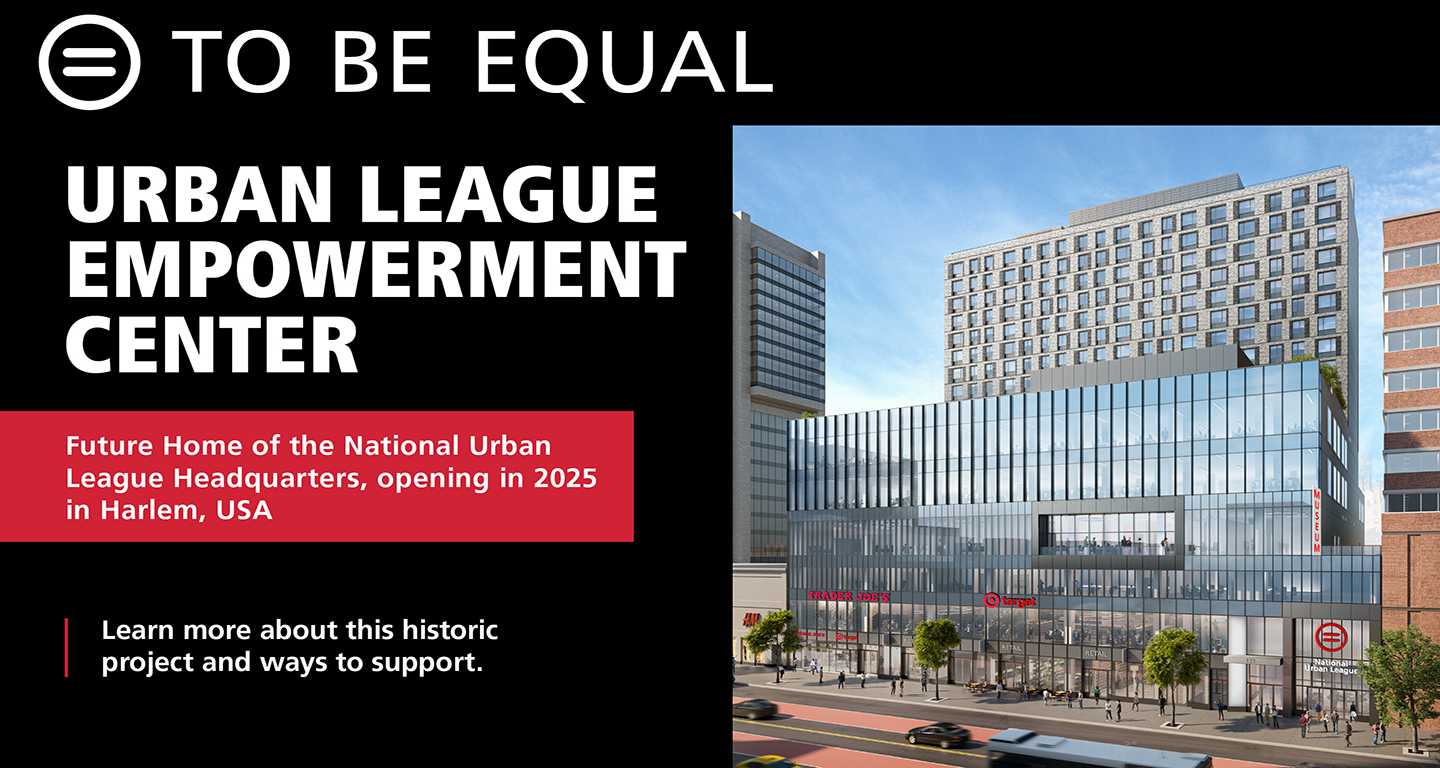National Urban League Celebrates Harlem, “The Beating Heart Of Black Culture In America”

Marc H. Morial
President and CEO
National Urban League
With Construction Of Empowerment Center Under Way, National Urban League Celebrates Harlem, “The Beating Heart Of Black Culture In America”
“With soil exhaustion and the boll weevil pushing Southern blacks away from the land, Harlem became a destination of almost mythical proportions, where manufacturing jobs, a united community, and an escape from poll taxes and Jim Crow laws awaited. It was exotic, colorful, sensuous; a place that partied late into the night.” -- James Roman, Chronicles of Old New York
With construction of its new headquarters underway in Harlem, the National Urban League this week took a step toward revitalizing its historic role as a hub for Black culture and activism, and a catalyst for enterprise, creativity, and advocacy.
As construction crews worked to lay the foundation in the lot next door, our staff, trustees, and supporters gathered at Adam Clayton Powell Jr. State Office Building Plaza with community groups, city and state elected officials, and economic development partners to celebrate the community that gave birth to the National Urban League.
As an early champion and supporter of Harlem’s emerging artists and intellectuals, the National Urban League, in turn, helped give birth to the Harlem Renaissance.
The $242 million, 414,000-square-foot Urban League Empowerment Center, slated to open by January 2025, is one of the most significant economic development projects in Harlem’s recent history. Located on West 125th Street near legendary cultural institutions like the Apollo Theater and the Studio Museum in Harlem, the Empowerment Center will include the National Urban League’s headquarters, the Urban Civil Rights Museum Experience, and the National Urban League Institute for Race, Equity and Justice, along with 170 units of affordable housing, below-market office space for non-profits and community groups including One Hundred Black Men of New York, United Negro College Fund New York, and the Harlem-based Jazzmobile, and retail space featuring Target and Trader Joe’s.
As the beating heart of Black culture in America, Harlem is our rightful and natural home. It was where George Edmund Haynes, then a PhD candidate at Columbia’s School of Social Work, began a study of the hardships faced by Black Americans newly arrived from the rural South.
His dissertation, The Negro at Work in New York City, reached a startling conclusion: “the Negro is coming to the city to stay.”
This flew in the face of the commonly-held belief that the African American migration from the South to northern cities was temporary, and they would eventually return to the south.
In 1910, when Haynes completed his dissertation and founded the National Urban League with Ruth Standish Baldwin, the population of Harlem was 10 percent Black. Within 20 years, it would be 70 percent Black, and the undisputed center of Black culture, art, and intellectual discourse.
The National Urban League played a major role in cultivating the Harlem Renaissance when it began publishing a monthly magazine, Opportunity: Journal Of Negro Life, in 1923.
Its first publisher, Charles S. Johnson, was the League’s research director. He would go on to become the first Black president of Fisk University. To encourage young writers to submit their work to Opportunity, Johnson sponsored three literary contests. In 1925 the winners included Zora Neale Hurston, Langston Hughes, and Countee Cullen.
The event also marked the public launch of the National Urban League’ Campaign for Equity, an initiative to support the Empowerment Center and its institutions.
This week’s event is the latest milestone on a journey that began as far back as 1896. The U.S. Supreme Court’s decision in Plessy v Ferguson upheld the constitutionality of racial segregation set in motion the Great Migrations of Southern Blacks to Northern cities.
In July of 1905, W.E B. Du Bois and other civil rights leaders convened the inaugural meeting of the Niagara Movement to oppose racial segregation and disenfranchisement. The following year, Niagara activists organized The Committee for Improving the Industrial Condition of Negroes in New York (CIICNNY) – one of the organizations that would later merge into the National Urban League. Around the same time, National Urban League co-founder Ruth Standish Baldwin helped establish another of the League’s parent organizations, the National League for the Protection of Colored Women (NLPCW).
On September 29, 1910, Baldwin and Haynes convened the first meeting of The Committee on Urban Conditions Among Negros, later to be known as the National Urban League. CIICNNY and NLPCW merged with the League the following year. The new unified objectives of the League were:
- “To bring about co-ordination and co-operation among existing agencies and organizations for improving the industrial, economic, social, and spiritual condition of Negroes and to develop other agencies and organizations, where necessary.
- “To secure and train Negro social workers.
- “To make studies of the industrial, economic, social and spiritual conditions among Negroes.
- “To promote, encourage, assist and engage in any and all kinds of work for improving the industrial, economic, social and spiritual conditions among Negroes.”
The National Urban League no longer recruits and trains social workers, but otherwise, our core mission remains true to these original objectives. With the establishment of the Urban League Empowerment Center, we can fulfill that mission on a scale that is exponentially greater and more comprehensive.
Thank you, Harlem, for your warm welcome. Our future together looks bright.
###
24TBE 6/18/21 ▪ 80 Pine Street ▪ New York, NY 10005 ▪ (212) 558-5300
Connect with the National Urban League
Facebook: https://www.facebook.com/NatUrbanLeague
Twitter: https://twitter.com/naturbanleague
Instagram: https://www.instagram.com/naturbanleague
Website: https://www.NUL.org
Newsletter: http://bit.ly/SubscribeNUL
YouTube: http://bit.ly/YTSubNUL

